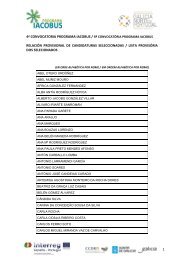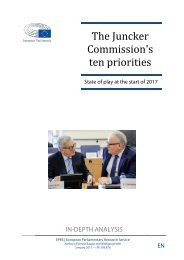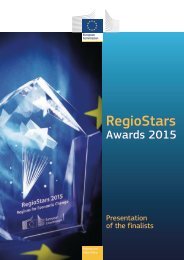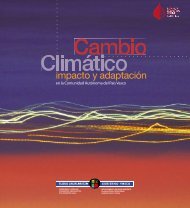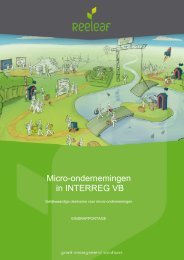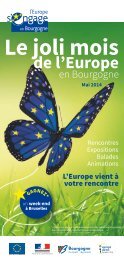1euaGiT
1euaGiT
1euaGiT
Create successful ePaper yourself
Turn your PDF publications into a flip-book with our unique Google optimized e-Paper software.
The first round table discussion was held in DG EAC with eight colleagues from the<br />
Youth Policy Unit. The second round table discussion was held with five of the members<br />
of the expert group on recognition of youth work and non-formal learning of the Youth<br />
Partnership between the EU and the Council of Europe.<br />
The individual stakeholders represented the Council of Europe, European Commission,<br />
European Youth Forum, the Partnership between the European Union and Council of<br />
Europe in the field of Youth, POYWE- Open Youth clubs Network, European Platform for<br />
Non-professional Youth Work, World Scout Bureau, Youthpolicy.org, the Flemish<br />
Governmental Agency for Youth Issues, Finnish Ministry for Education and Culture<br />
(youth division), the National Agency Youth in Action in Germany, and a number of<br />
academics known at the EU level.<br />
1.2.3 Case studies<br />
Conducting case studies was the next key stage during the data collection phase. The<br />
team of researchers selected and carried out 27 case studies which were broken down<br />
into 14 long case studies and 13 ‘snap-shot’ case studies. The purpose of these case<br />
studies was not only to identify the critical factors for success in youth work, but to<br />
understand why they were successful, how youth work creates added value and under<br />
what circumstances youth work is successful. A pool of youth work examples was<br />
collected in order to identify how successful practice was achieved using a variety of<br />
methods, including desk research and sourcing examples from EU and national level<br />
stakeholders. A set of screening criteria was put in place to identify potential case<br />
studies which included:<br />
■ The activity(ies) must be youth centred;<br />
■ The activity(ies) must have been established for at least three years;<br />
■ The activity(ies) must be working towards the well-being of young people.<br />
The resulting screened list of examples was subsequently classified using a three-tier<br />
system in order to identify examples with evaluation studies (Tier 1), examples with<br />
monitoring data (2), and (3) nominated examples that are interesting/unusual, even if<br />
they do not have either monitoring data or evaluation studies of their work.<br />
■ Tier 1 – Evaluated activities: Examples that have been subject to at least<br />
one evaluation of their activities.<br />
■ Tier 2 – Monitoring activities: Examples that have implemented monitoring<br />
of the implementation of their activities. At a minimum they have collected<br />
data on participation.<br />
■ Tier 3 – Promising activities: Examples that have a strong qualitative<br />
evidence-base and have been identified as being appropriate for<br />
consideration as ‘best practice’. Whilst these examples do not have either<br />
monitoring or evaluation data, this is not a criteria for exclusion. Despite the<br />
lack of evidence based outcomes, they may still be implementing core<br />
strategies/factors that are linked to successful outcomes.<br />
On the basis of this classification, case study examples were selected that have proven<br />
their success, illustrated a successful track record or were nominated due to their<br />
promising strategies/activities. It was important not to exclude interesting examples of<br />
potential good practice due to a lack of evaluation or monitoring data as the lack of<br />
these elements can simply reflect other factors such as the size or context of the<br />
examples. Therefore, some promising examples were included in the selection process.<br />
In addition to these various tiers for selection, other factors were taken into<br />
consideration in the selection. It was important to select a set of cases that represent a<br />
variety of target groups. Therefore, consideration was given to whether the case is:<br />
■<br />
Universal (open to all); or<br />
47



